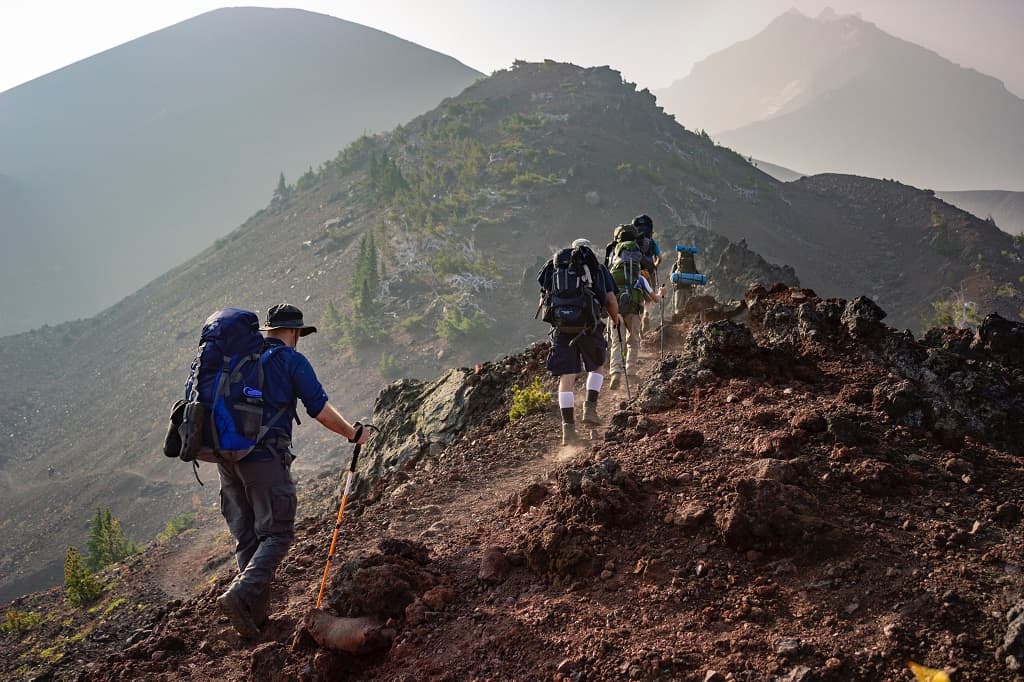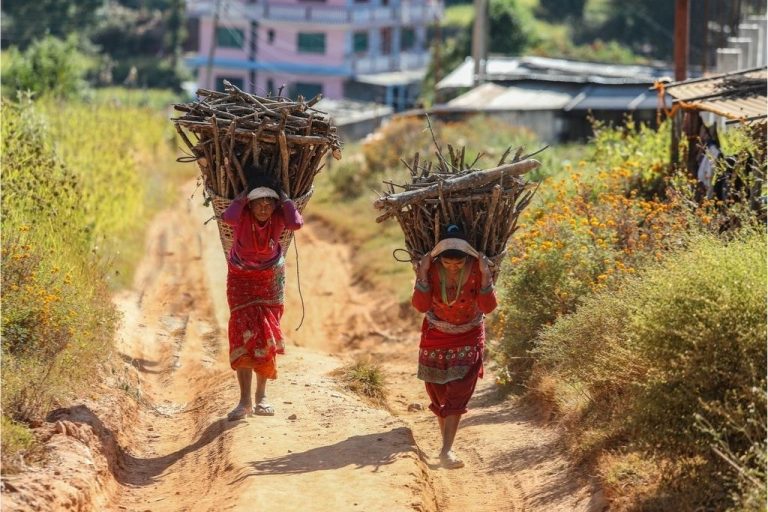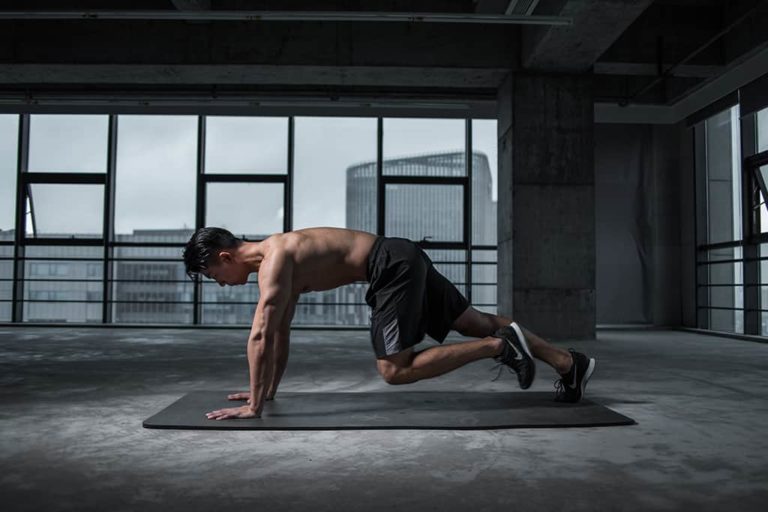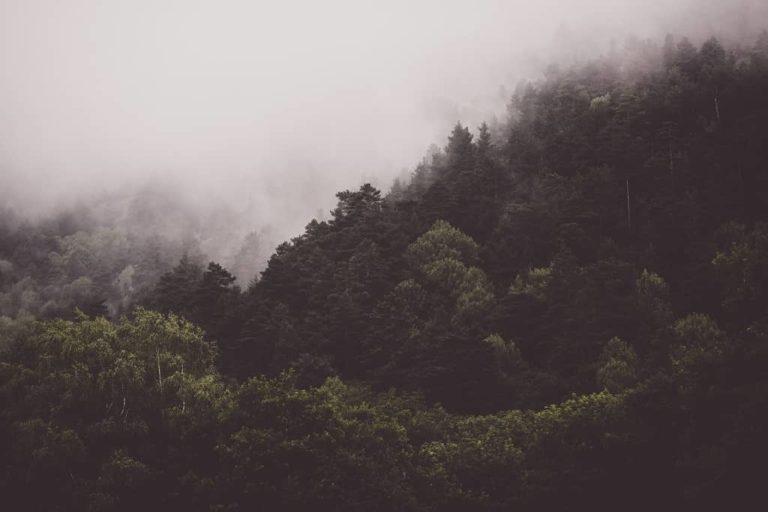Trekking: 10 awesome tips for beginners
Trekking for beginners can be strenuous as you will have to walk long distances and climb steep gradients, but everyone can enjoy them—especially beginners. Treks are essentially walking holidays but with a more adventurous flavor.
Trekking is an activity that many people dream of trying at least once in their lives. The idea of getting into shape and exploring the outdoors at the same time is appealing to many people, but the idea of hiking for days on end with little supplies might sound a little scary.
Luckily, many guided trekking tour companies can help newcomers get off the ground and enjoy the great outdoors. If you are enthusiastic, you can do it on your own too.
We have devised this guide to help you plan your first trekking holiday safely and enjoyably: from choosing the correct route for your first time to packing lightly and staying well-hydrated.
Trekking for beginners: Is hiking and trekking the same thing?
The answer is a bit complicated. Hiking refers specifically to walking through forests or mountains and can involve trail walking with or without a backpack.
On the other hand, trekking refers to going for long walks that can take days to weeks and even a month, often in the mountains. Trekking in the Himalayas is a very favorite activity for many adventurers. A ‘trek’ could also be a walk on any other kind of footpath (e.g., those found in or near the countryside), which most tourists use these days to visit attractive destinations like national parks and other wild places.
Trekking involves carrying a backpack on your back and camping out in huts or tents at night. You can go wherever you want: up steep slopes, through dark forests, over snowfields, across deserts, or through jungles.
Trekking is the experience of a lifetime where you get the chance to know a country and its people; honestly, nature’s beauty and solitude are unforgettable.
Learn more about the differences between trekking and hiking here
When should I go trekking?
The timing for trekking for beginners will depend on where you’re going. The high-altitude treks of Nepal or the Himalayas will get too cold and dangerous in winter- for example, if you want to walk across the Annapurna or Everest.
It’s mid-September to November for those treks, which is when the monsoons are over, and there is still enough water from the small rivers and streams to keep you and your local guides happy.
Trekking for beginners: Importance
- Trekking is an adventure activity that can be done on your own, with family, or with friends
- Trekking is one of the best ways to discover the natural beauty of the world.
- Trekking is a healthy activity that improves concentration and helps to burn calories.
- There are different trekking levels that you can try out depending on your experience and your endurance. Thus, it is a great way to test your endurance.
Tips for Trekking for Beginners
Trekking is an outdoor activity involving walks in the countryside, and it is one of the most popular ways to experience natural beauty. To do so, here are ten tips that will help trekking beginners who are also looking forward to carrying out the best first trek of their lives.
1. Pick the correct route
There are several topics you need to consider while planning a trekking holiday. Where do you want to go? How difficult do you want your route to be?
The first step is choosing the correct route for your first trekking trip. It would help if you plan about where and what walkers like yourself will be doing on their walks and how important it is for them not to get too tired.
Select the start and finish points that will suit you and your group.
Plan your route so that you can take in some of the local attractions along the way. It will make your trip more exciting and memorable. You can also ask your guide to lead you along an interesting route where s/he can show you attractions that you might like to know more about.
Here is a list of three easy trekking routes in Nepal for beginners and families
2. Check the weather
Please note that it is essential to check the weather forecast before deciding where to walk, as there are some areas in the world that are unsuitable for trekking in the summer months. Make a note of places like this in your diary, so you don’t forget.
When going on a hike/trek in the mountains, it is crucial to be prepared for any weather condition. It is vital to be ready for rain, sleet, snow, thunderstorms, and wind.
The best way to do this is by using a weather app, which will provide detailed information about the local conditions. You can also get weather-based information from most tourist information centers.
Sometimes even if the weather forecast predicts that it will not rain on your hike, you risk getting caught in a thunderstorm or light rain during your trek. If you get caught in a storm or heavy rain, be prepared to stay dry by bringing along plastic trash bags and water-proof gear.
3. Buy a good trekking gear
Trekking is an outdoor activity involving walks in the countryside, so make sure to invest in good trekking gear.
You can do this by buying hiking boots and a backpack. You can then assemble these items when you get to the start line of your first trekking trip.
However, some personal trips are not meant for hiking and cannot be undertaken with trekking equipment. Take note of this before you start walking.
4. Only pack the essentials
An individual who decides to go trekking should wear comfortable clothing that is lightweight, such as hiking shorts or a T-shirt. A backpack is also recommended because you will need to carry your equipment along with your gear and food.
You might also want to take a few small items, such as sunscreen, a camera, water, and snacks. Make sure these things are packed separately to reduce the weight of your backpack. If you don’t think you could fit them all in without making them uncomfortable, then leave them at home.
Also, consider the weather forecast. If it is going to be warm, you might want to carry a light jacket or vest.
Here is a guide on the essential items for trekking which works as a checklist too
5. Start training before the trek
It would be best if you got in shape before you start your first trek by working out. Working out includes cardio and strength training that focuses on your stamina and endurance. But if you don’t have time to work out, there are many fun ways to get in shape.
You can go for a run, go biking, or go swimming. Also, take time to stretch your muscles before and after exercise. Stretching your muscles is important because it helps you warm up before a hard workout and helps you cool down afterward to reduce the risk of injury.
Here is a guide on how to get in shape for trekking that you may need
6. Walk at your tempo
It is the best way to get the most out of your daily walk. No need to rush or go so slowly that you’re standing still, it’s all about finding a tempo that feels good for you. You’ll be more relaxed and energized, and your body will thank you for it.
When you find your tempo, please don’t change it. Take a break if you need to. That way, your legs will get used to walking in that same rhythm, and you’ll get stronger and fitter the longer you keep that pace.
The only person you should be concerned about is the one walking ahead of you. Don’t get caught up in your fellow trekkers; they are just a group of people going on a walk. After all, you decided to go on this walk yourself.
Plus, walking too fast with little to no breaks can lead to altitude sickness in higher elevations.
7. Drink adequate water
Whether you are in the mountains or a forest, it is vital to remain hydrated. Even if the weather is good, you will still sweat while walking. It causes your body to dehydrate, resulting in fatigue and exhaustion.
Dehydration also leads to Acute Mountain Sickness (AMS), which is fatal when it comes to high-altitude treks.
For this reason, it’s crucial to drink water every time you pass by a water source or stream. If the weather is hot, carry some water with you compulsorily, preferably in light and sturdy containers such as a water bottle or a hydration bladder.
Your water bottle should also be close at hand so that you can fill it every few hours.
In some places, water prices can be expensive due to the remoteness of the area and no means of importing and export of goods and services.
Here are some tips on how to stay hydrated.
8. In case you get lost
There is a chance that you might get lost on your first walking trip, even if it is an organized one. This might not be your fault; you might just be trying to take in the views as you go along.
If you have a GPS, then great, but if you do not have one, try keeping track of your current location by marking it with sticks or stones if you need to go back the same way again in the future.
If the weather is good, look out for the sun or landmarks to help you orient yourself and figure out where you are. If you don’t see anything you can use as a guide, try to think of what the last place looked like. Remember what direction you were heading in before and go back in that direction.
Don’t worry too much about getting lost; most people get better at orienteering as they go along, so don’t be too concerned if you get lost once or twice.
9. Be aware of other risks
Besides getting lost, the most common risks and dangers of trekking are hypothermia and altitude sickness.
Hypothermia occurs when the trekker’s body loses heat at a fast pace. It occurs predominantly in cold places or high altitudes. Make sure to wear warm clothing and not wear anything wet. You need to have good blankets and sleeping pads and eat warm meals and drinks.
Acute Mountain Sickness (AMS), or altitude sickness, is a life-threatening condition where trekkers are prone to higher elevation. Oxygen levels in high altitudes are thin, so it is vital to stay hydrated, acclimatize, and walk slowly, taking several breaks in between.
You may not be used to the trails during your first trek, so beware of steep slopes and do not walk close to the cliffs. Also, let the animals pass if you encounter them in the middle of the trail.
If you plan on going on a trek during the monsoon season or in wet areas, be aware of leeches. Read how to protect yourself from leeches here
10. Enjoy the nature
Lastly, unplug from technology, stop being constantly connected, and instead enjoy nature.
Listen to the birds chirp, smell the fresh air, and look around the beautiful natural scenery surrounding you.
In conclusion, trekking is one of the most exciting experiences that you can have and to be part of such a fantastic activity is truly a privilege. It helps to improve your mental health too.
Take note of the trekking for beginner tips above, and have a fun-filled adventure while making your first trekking trip.







